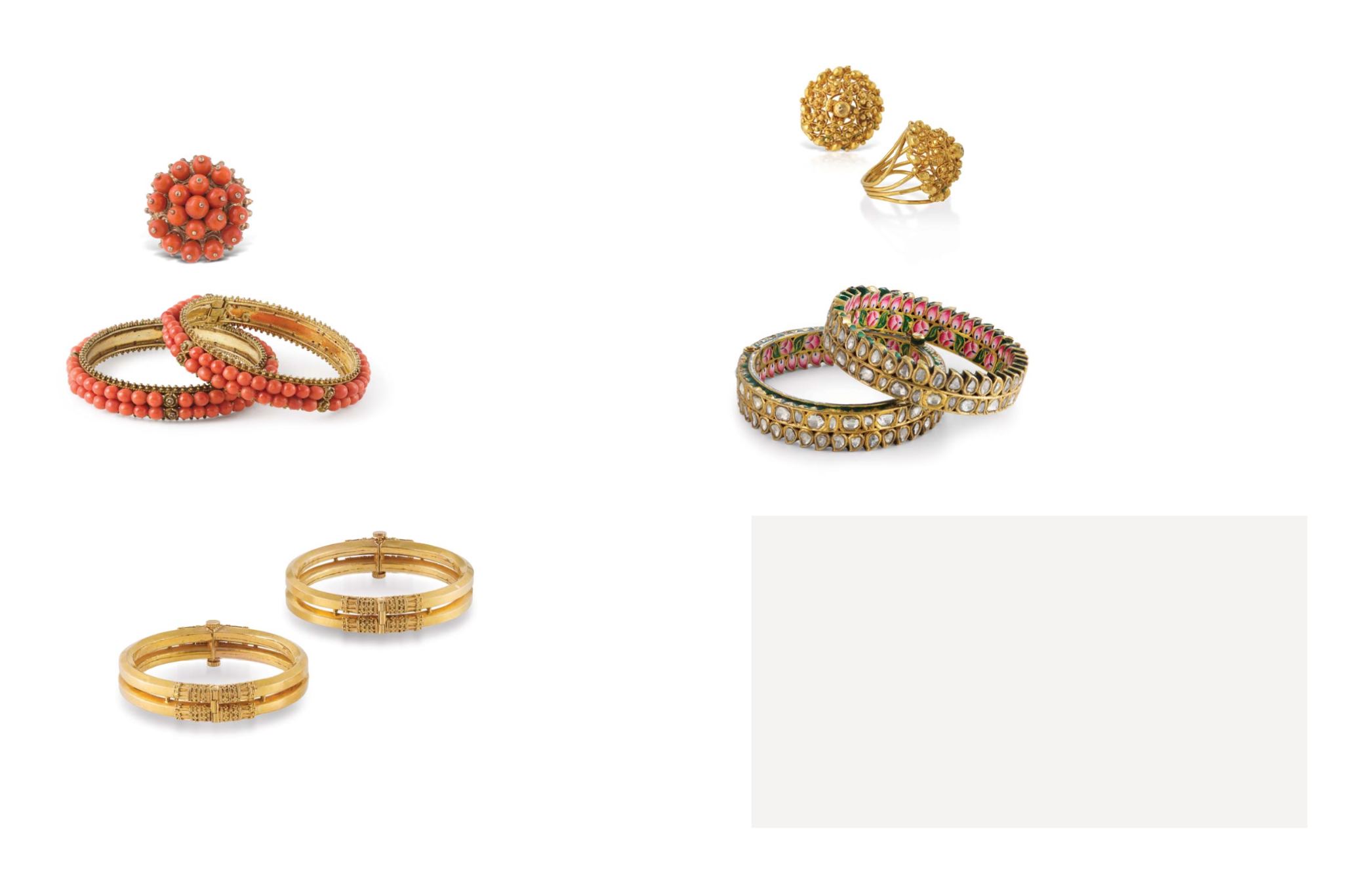

40
41
48
PAIR OF ENAMELLED DIAMOND
BANGLES
Designed with
polki
diamonds in two rows of
kundan
‒
work, with one row being in leaf motifs. The inner
edge enamelled with pink and white flower buds with
green leaves. Both the outer edges are in green enamel.
Gross weight: 115.68 grams
$ 6,990 ‒ 8,460
Rs 4,75,000 ‒ 5,75,000
PROVENANCE:
Property of a descendant of the Mangaldas family
47
GOLD RING
Openwork gold ring in foliate motifs set to a shank
of gold.
Gross weight: 9.20 grams
$ 370 ‒ 740
Rs 25,000 ‒ 50,000
Ring size: American 4 3/4, English J
PROVENANCE:
Property of a descendant of the Mangaldas family
46
PAIR OF GOLD BANGLES
Designed as hinged gold bangles with granulation work
around the hinges.
Gross weight: 54.52 grams
$ 2,145 ‒ 2,860
Rs 1,50,000 ‒ 2,00,000
PROVENANCE:
Property of a descendant of the Mangaldas family
45
SET OF CORAL RING AND BANGLES
A ring of coral beads and a similarly styled pair of
bangles where the coral beads are strung in clusters
or rows, mounted in silver.
Gross weight (bangles): 66.70 grams
Gross weight (ring): 7.55 grams
$ 860 ‒ 1,430
Rs 60,000 ‒ 1,00,000
Due to export regulations, this lot can not be sold
outside India.
Ring size: American 4 3/4, English J
PROVENANCE:
Property of a descendant of the Mangaldas family
G
ulabi
meenakari
or enamelling, called so for its pleasing shades of pink, originated in
Benaras (Varanasi). The technique was introduced by a Persian enameller in the 17
th
century. The city, long famed as one of the oldest and holiest cities of India, with a history
dating to five thousand years ago, had by then come under the reign of the Nawabs of Oudh.
They supported their artisans and helped them master and refine the technique.
The pink enamelling is made by finely grinding red enamel with rose oil, and applying this onto a
white ground. The liquid enamel would then be fired in a kiln to fuse it to the white. Prior to this,
the enameller would have applied four layers of various pigments, and fired the ornament each
time, building up the layers. The procedure may sound deceptively simple, but to elevate it to a
form of art, the enameller would first engrave the parts which had to be filled with enamel, and
then apply multiple layers to achieve a beautiful gradation. The engraving tools, and the brushes
used to paint, would have to be very finely tipped to fill in details in a small space.
As with enamelling traditions from other regions, Benarasi or
gulabi meenakari
commonly
includes floral motifs such as chrysanthemums, lotuses and rosebuds on the reverse of the
jewelled ornament.


















